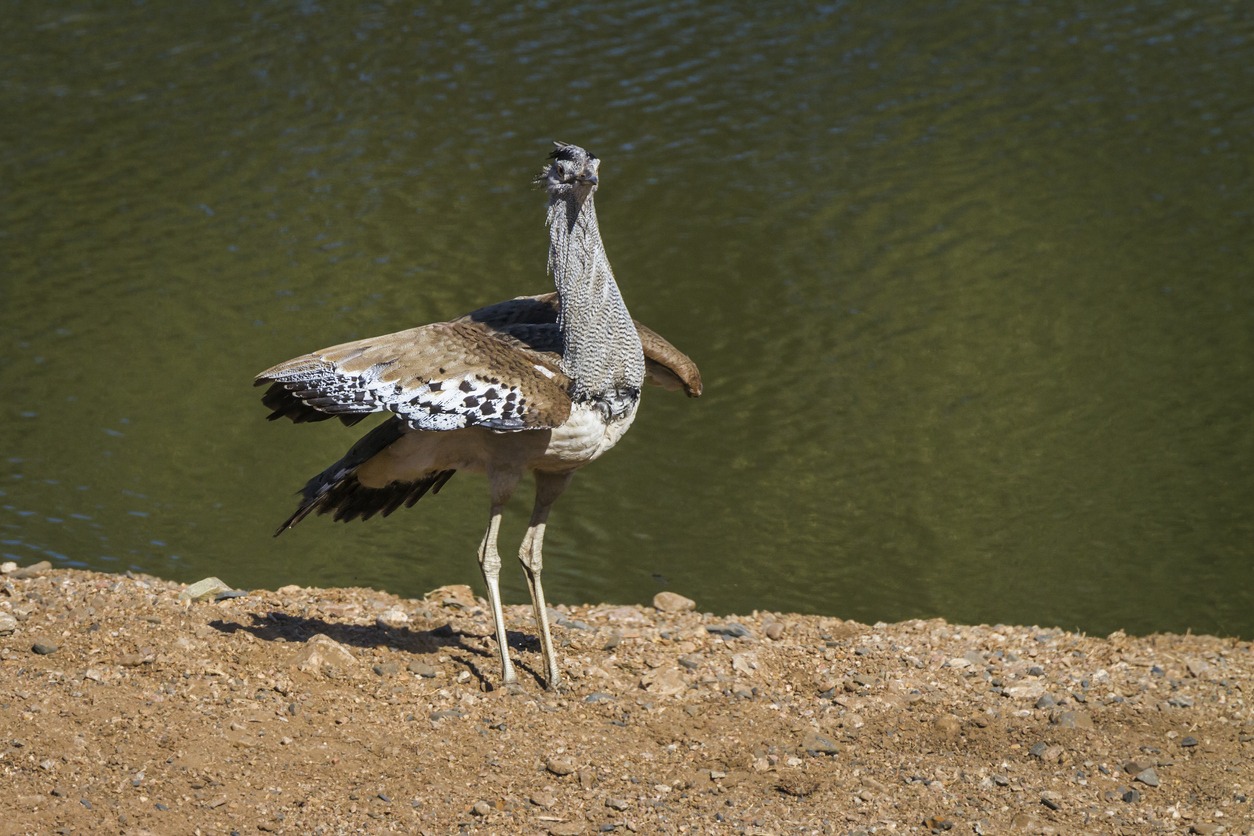It is a fairish-to-large-sized bustard, with a pale orange nape, hindneck, and darkish grayish-brown face and fore neck. Females and juveniles are relatively paler and smaller than males. Pairs or small groups occur in semi-arid woodland and open shrubland. These birds are nomadic and wander within its range, aggregating in flocks after the rains.
Read further to know more about the Ludwig’s Bustard.
What is a Ludwig’s Bustard?
Ludwig’s Bustard is bird species belonging to the Otitidae family of bustards. It is a fairish-to-large-sized species, name after Baron von Ludwig, which is a pharmacist, a proponent of natural science, known for having the first botanic garden in Cape Town. The bird species occurs in Angola, Botswana, Namibia, Lesotho, and South Africa, thriving in semi-arid woodland, grasslands, and shrublands.
Its seven levels of classification are as follows:
Kingdom: Animalia
Phylum: Chordata
Class: Aves
Order: Otidiformes
Family: Otididae
Genus: Neotis
Species: N. ludwigii
Ludwigs Bustard Physical Description
Ludwig’s Bustard is a medium-to-large-sized bird, growing from 30 to 37 inches, and weighing around 3 to 7.3 kilograms. It has a dull orange nape, hindneck, and darkish grayish-brown face and fore neck. Females and immature birds are relatively smaller and duller than males. Their much larger cousin, the Kori Bustard, has a barred grayish-toned neck, while Denham’s Bustard sports a paler grayish fore neck, compared to the dark grayish-brown fore neck of this species.
Where can they be spotted?
Ludwig’s Bustards are near-endemic to the southern part of Africa. These birds occur from southwestern Angola to the south and western Namibia, Northern Cape, and nearby provinces. It thrives in semi-arid areas shrublands, open woodlands, grasslands, and occasionally, visit cultivated fields.
Interesting Facts You Should Know About the Ludwig’s Bustard
Ludwig’s Bustards feed primarily on small vertebrates, arthropods, and plant matters. It forages on the ground, strolling, and pecking any food items it detects.
The food items it consumes include insects, such as locusts, grasshoppers, weevils, beetles, ants, bugs, flies, mantids, termites, and scorpions. They may also eat rodents, reptiles, and plant matter, such as seeds, flowers, berries, and leaves. Some of its predators are the Martial Eagle, Verreaux’s Eagle, and the Lanner Falcon.
These birds are nomad or partially migrant and will perform necessary movements to follow the presence of rainfall.
Ludwig’s Bustards are polygynous, which means a male has a territory in which he performs displays to attract females passing its range. The male will mate to several females in a given breeding period. The courtship display is often performed during the early morning and at dusk, as these birds typically search for food late in the morning and in the afternoon.
The nest is placed on a shallow depression on the grounds, lined with pebbles, situated close to the male Ludwig’s Bustard’s display site, hidden in dense vegetation. The female will lay 1-3 eggs, which she will solely incubate and raise, laying flat with them occasionally to prevent detection from predators.
Ludwig’s Bustards are now considered as an endangered species under the IUCN Red List. They are frequently killed due to collisions to power lines, and man-made traps.
WILDLIFE PARKS AND RESERVES WHERE THIS SPECIES IS FOUND:
SOUTH AFRICA
Kalahari Gemsbok National Park
NAMIBIA
BOTSWANA BIRDS | SOUTH AFRICA BIRDS
NAMIBIA BIRDS | ZAMBIA BIRDS | ZIMBABWE BIRDS

